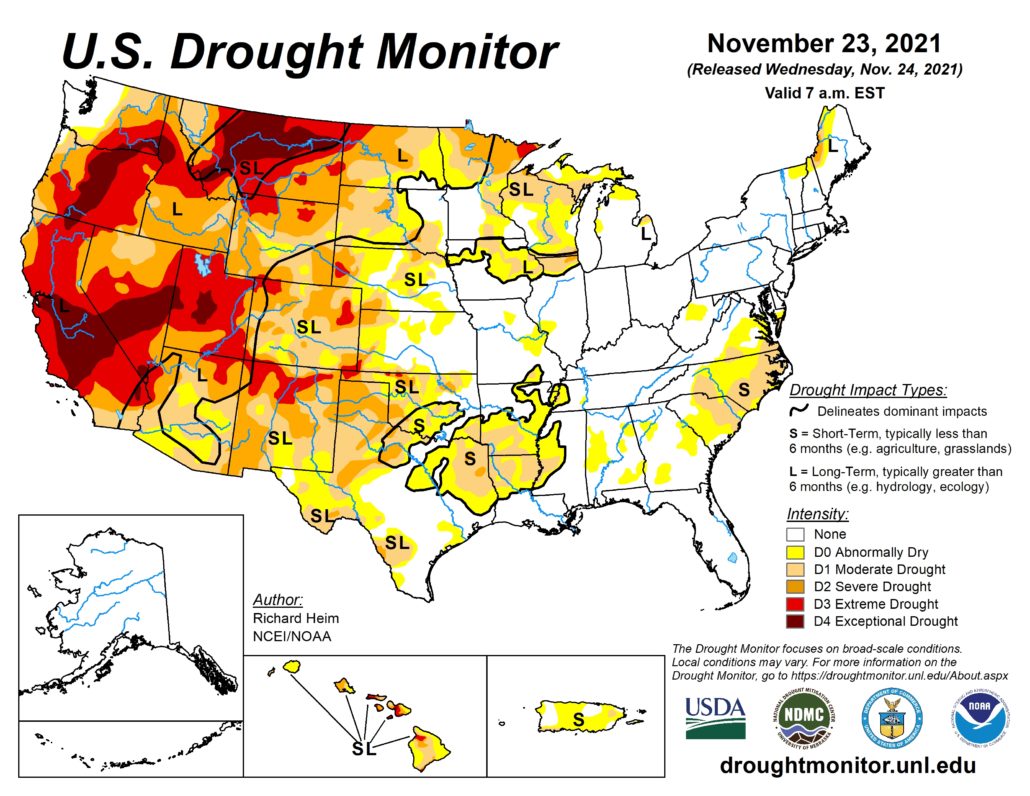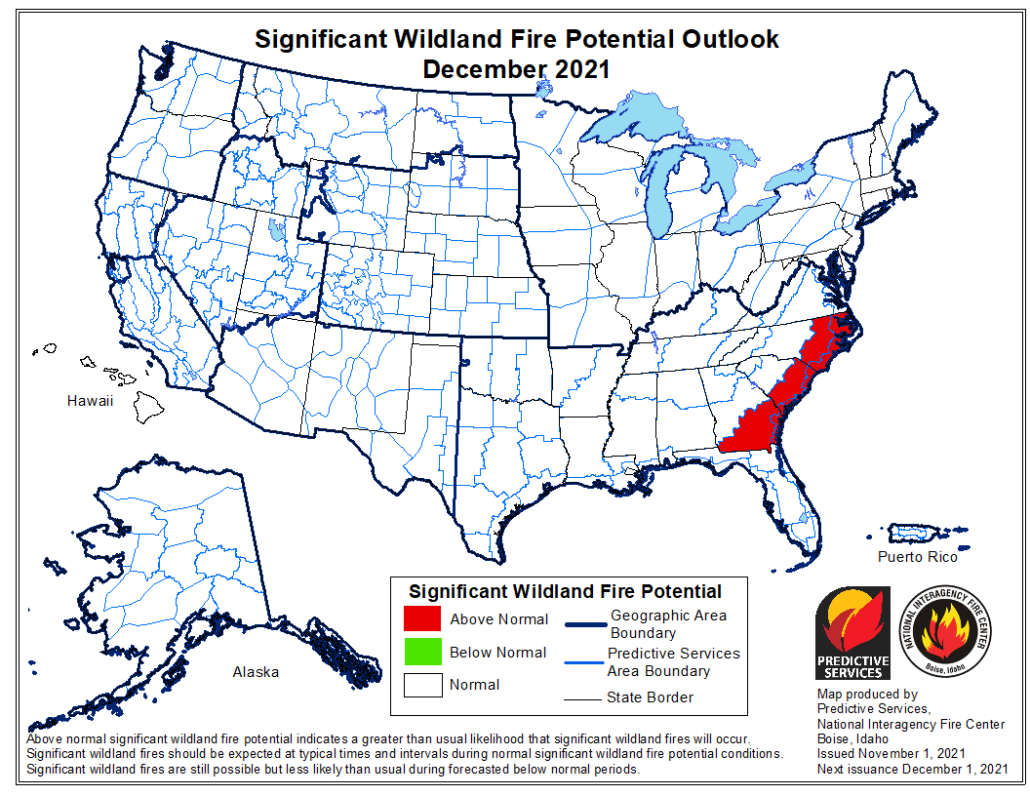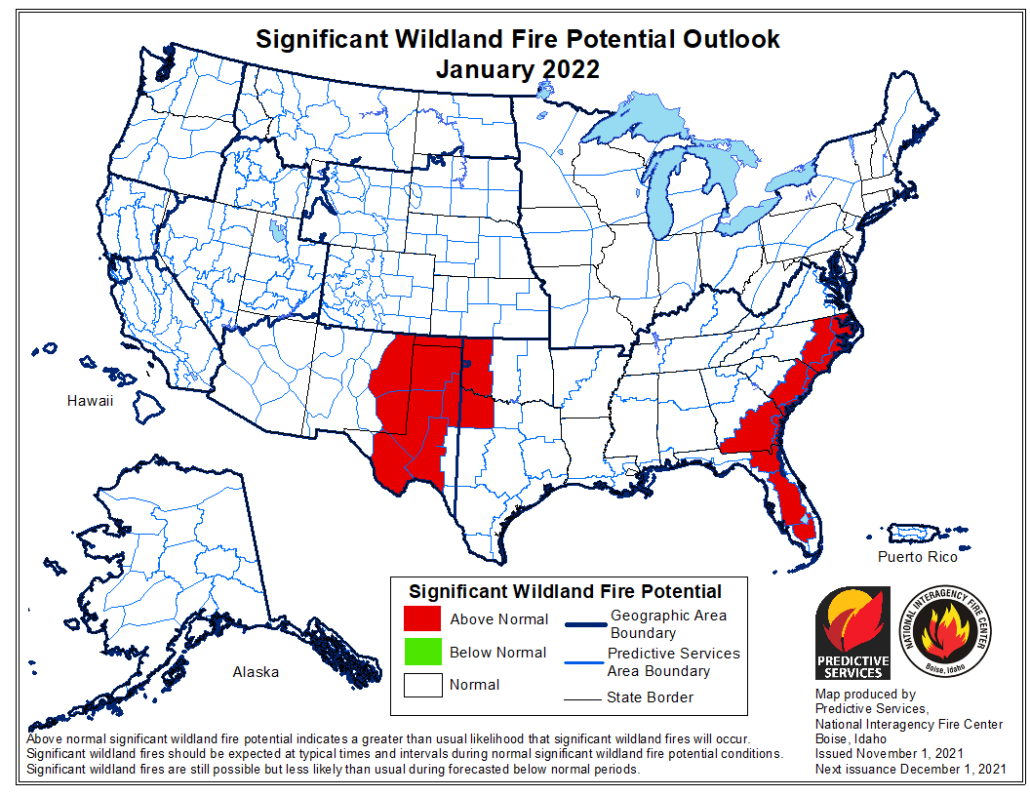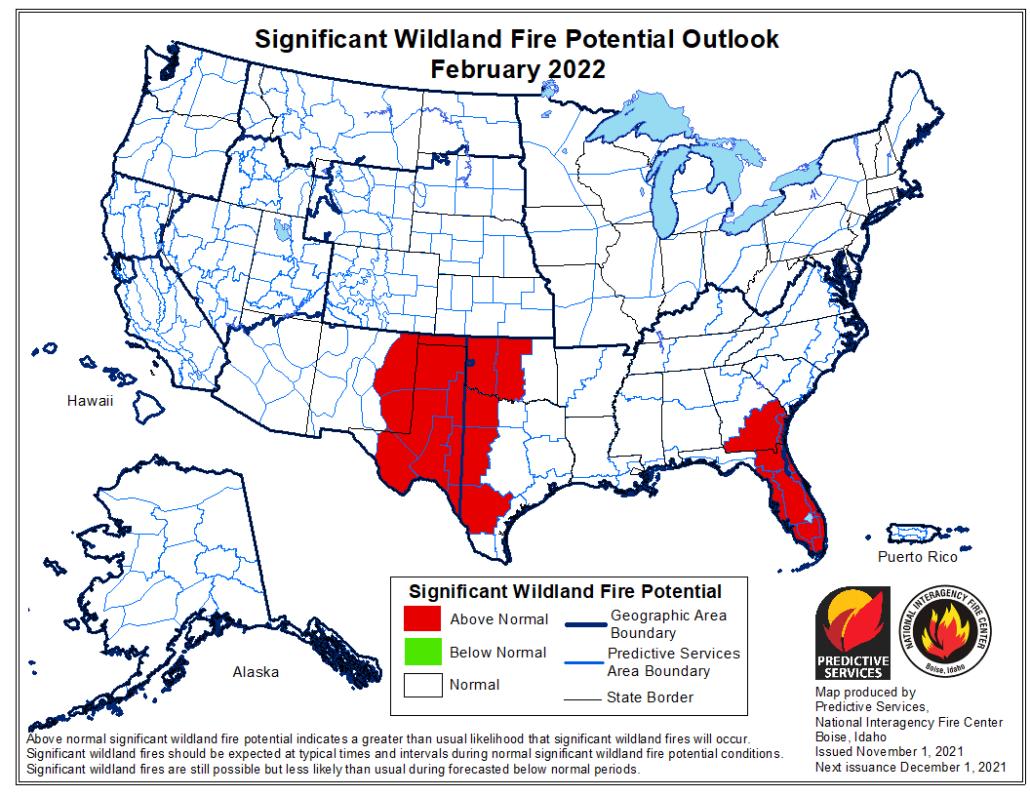Below are summaries from the National Significant Wildland Fire Potential Outlook, provided by the National Interagency Fire Center, for the period of December 2021 through March 2022. The full outlook can be located here.
Year-to-Date Statistics:
| Year-to-date statistics | Number of Fires | Acreage Burned |
| 2021 (01/01/21 – 11/26/21) | 52,729 | 6,631,430 |
| 2020 (01/01/20 – 10/29/20) | 52,113 | 8,889,297 |
| Percentage of 10-year Average | 98% | 93% |
Source: https://www.nifc.gov/fireInfo/nfn.htm
Observations in November:

More than 90% of the West is in drought, with almost half of the West in the highest two categories of drought. Most of the CONUS had below average precipitation except notably in Washington, south Texas, and the Florida Peninsula. Temperatures were also warmer than average across the West and most of the Plains, with cooler than average temperatures in most of Southern and Eastern Areas. Abnormally dry and drought conditions expanded in the Carolinas due to the prevalence of dry, postfrontal conditions throughout November across much of the Southern Area.
Weather Outlook for December-March:
Climate outlooks for winter indicate above normal temperatures are likely along the southern tier of the CONUS, with the highest probabilities likely in the Southeast. Below normal temperatures and above normal precipitation remain expected across the Pacific Northwest and through portions of the northern Rockies and northern High Plains. The Great Lakes is also likely to experience above normal precipitation through February. Below normal precipitation will likely accompany above normal temperatures across the southern half to one-third of the western US, through much of Texas, along the Gulf Coast, and into the Carolinas.
Above normal significant fire potential will continue on the plains of central and eastern Montana in December, as this area remains snow-free with periodic dry and windy conditions. Additionally, leeward sides of the Hawai’ian Islands and the Coastal Plains in the Carolinas and Georgia are forecast to have above normal significant fire potential in December. Through winter, above normal significant fire potential is expected to expand into much of Florida and Georgia, while returning to normal potential in the Carolinas.
Critical fire weather could bring periods of elevated fire potential to the southern Plains in December and January. However, there is greater confidence in above normal significant fire potential emerging by February across eastern New Mexico, west Texas, western Oklahoma, southeast Colorado, and western Kansas. Above normal potential is likely to expand eastward across Texas and Oklahoma and to lower elevations in southeast Arizona and southern New Mexico during March. This above normal potential will be acute during wind-driven events.



Source: NIFC




